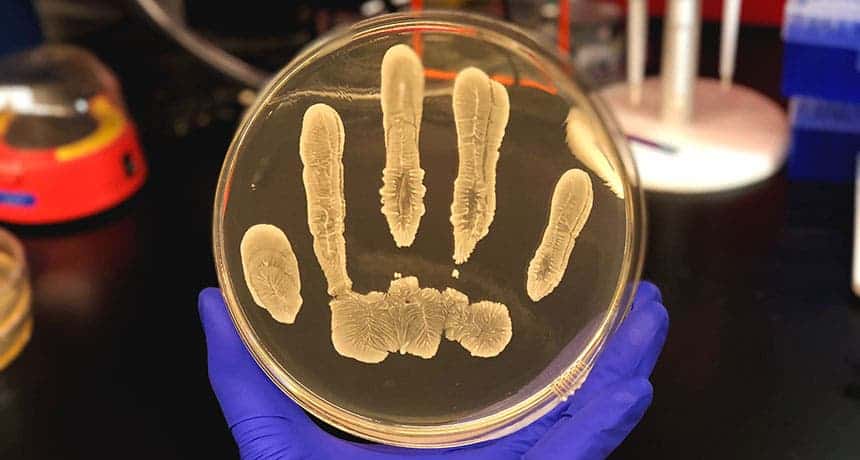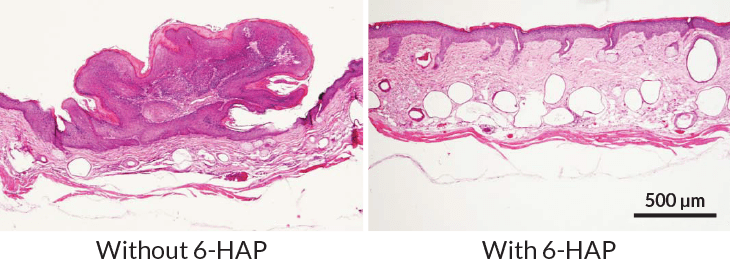Researchers discovered that Staphylococcus epidermidis, a common human skin bacteria, produces a substance that helps protect against skin cancer.

Photo credits: R. Gallo and Teruaki Nakatsuji/UC San Diego
The discovery came as a surprise for the US researchers, who were studying the antimicrobial effects of various Staphylococcus epidermidis strains when they observed something intriguing: the mice treated with one particular strain became very resistant to skin cancers.
The compound produced by this strand is called 6-N-hydroxyaminopurine, or 6-HAP for short, and it resembles one of the building blocks of DNA.
“Because of that structure, we wondered if it interfered with DNA synthesis,” said Richard Gallo of the University of California, San Diego, one of the researchers on the study.
Next, researchers tested 6-HAP’s properties in a tube. The substance blocked the enzyme that builds DNA chains and prevented the chains from growing. 6-HAP only stopped DNA formation in different types of cancerous cells grown in the lab. When it was tested on normal skin cells, the compound was not able to stop DNA formation. Scientists discovered that certain enzymes in normal skin cells deactivated 6-HAP, and the tumor cells tested appeared to lack those enzymes. The research team also observed that 6-HAP worked both when injected and when applied topically.
Scientists injected mice with skin cells and separated them into two groups. One group received a shot of 6-HAP, while the other one didn’t. All mice had grown tumors, but the animals who received 6-HAP shots had tumors about two times smaller than the control group.
Next, scientists applied S. epidermidis on the backs of hairless mice subjected to UV rays. Some mice got a strain that makes 6-HAP; others got a strain that does not. After being periodically exposed to UV rays for 12 weeks, the first group developed only one tumor each, while rodents in the second group had grown four to six tumors.

T. Nakatsuji Et al/Science Advances 2018
S. epidermidis strains gained the ability to stop DNA synthesis to inhibit the growth of other bacteria. By doing so, S. epidermidis protects its homestead from other invading pathogens.
“Perhaps we evolved to provide a safe haven for these organisms because they also benefit us when they’re doing this,” Gallo says.
Then, researchers wanted to see how many people had the 6-HAP strands living on their skin. They did a small study of existing genetic data from the human skin microbiome and found that approximately 20 percent of the human population have S. epidermidis strains that make 6-HAP on their skin.
Additionally, 6-HAP was also able to block DNA synthesis in lymphoma cells. It seems like this compound is really something, right? Of course, doctors still have to fully understand how this bacteria interacts with its host before integrating it in treatments. Still, this is a great discovery. Maybe, in the future, researchers will develop skin probiotics to protect against infections and skin cancer.
The paper was published in the journal Science Advances, on February 28th, 2018.


